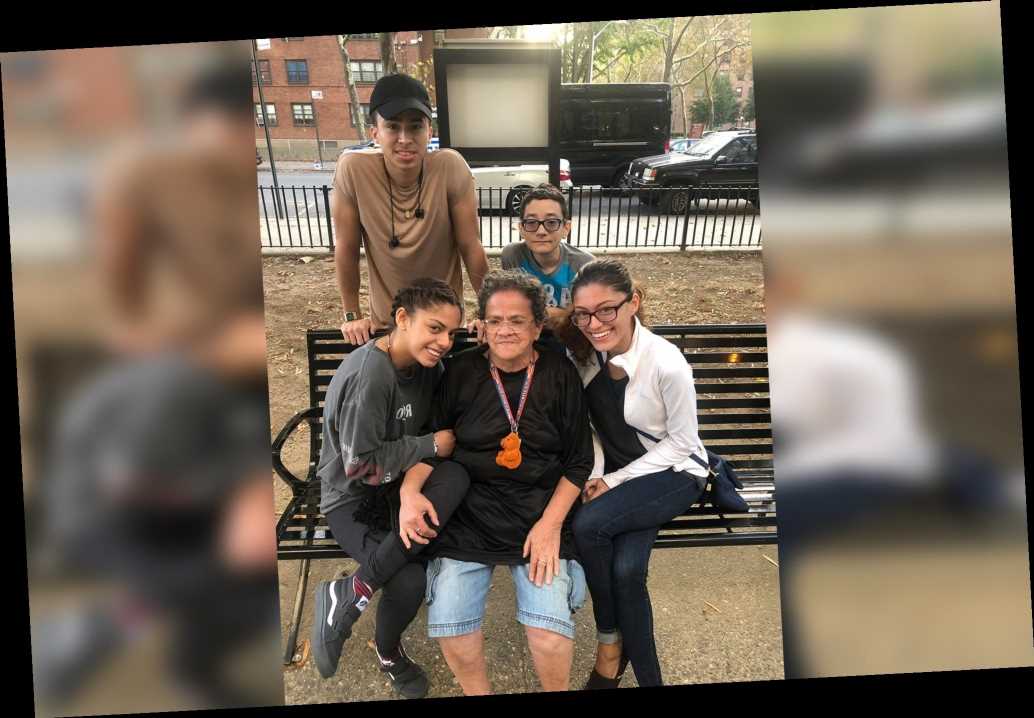More On:
historic buildings
Meet the 81-year-old living in a 22,000-square-foot NYC mansion rent-free
Amtrak’s new Penn Station waiting hall opens Jan. 1
Media power couple with ties to Valerie Plame scandal ask $3.4M for downtown spread
New Dorothy Parker-branded tower hopes to lure literary crowd
Clad in fake stoneface and mostly shorn of its old clapboard and ornament, the dingy, two story house at Riverside Drive and 159th Street isn’t much to look at.
But a group of neighbors, preservationists, historians and local politicians believe it was once a stop on New York’s Underground Railroad, and they’re fighting to restore its original, Italianate elegance from the mid-1850s, when it sat amid woods and farmland and fiery abolitionist Dennis Harris called it home.
First, though, they have to save it from the wrecking ball.
“It’s beyond frustrating because you feel the history when you stand there,” Manhattan Borough President Gale Brewer told The Post.
“You can feel these abolitionists who really did try to get slaves freed. You can feel it. And the idea of tearing it down for a 13-story building that means nothing is heart-wrenching,” she said.
New owner Sigmund Freund and developer Michael Petrokansky have received preliminary city approval to demolish the structure to build a 13 story, 46-unit condo building; neither returned requests for comment from The Post on Saturday.
Meanwhile, the house has a crowd of local advocates on its side, including Harlem historian and preservationist Michael Henry Adams.
“Dennis Harris, who built the house, was an abolitionist of the caliber of John Brown. It’s unlikely that if he used his other properties that he didn’t use this one,” Adams told The Post.
“Since it’s the only building that has any association with him, that makes it worthy.”
Historian Joseph Amodio, who prepared a 36-page report that was submitted to the city Landmarks Commission, detailed the home’s significance.
“Both men were ardent abolitionists,” the report says of Harris, who lived there in 1852-3, and Harris’s friend, Judge John Newhouse, whose descendants occupied the home for the next half-century.
Harris, a Methodist minister and sugar refinery magnate, used his Vestry Street and West 158th Street pulpits to preach abolition and his shipping wharfs along the Hudson to help bounty-hunted southern slaves steamboat to northern freedom, writes Amodio, citing Pulitzer Prize-winning slavery authority Eric Foner in his report.
“It serves as a potent reminder of a more rural phase of this neighborhood as the United States itself was on the brink of seismic change — and a link to the brave men and women who brought forth that change with passion, innovation and hope,” Amodio wrote.
The local community board and the Upper Riverside Residents Alliance, which has set up a website arguing for preservation, have lobbied City Hall and enlisted historians to document the structure’s significance.
Brewer, along with State Sen. Robert Jackson, Assemblyman Al Taylor and Council Member Mark Levine, say they will continue to push the city and Landmarks Commission to preserve the property.
But in December, the commission rejected their arguments flat out, essentially arguing that the building looks nothing like it did 170 years ago, when Harris lived there.
It’s a Catch-22 — because it no longer has its original appearance, the building can’t be protected and restored to its original appearance.
“Staff review of 857 Riverside Drive determined that it does not appear to retain the integrity necessary for consideration as an individual landmark due to the extensive modifications that have been made to the house and its architectural details,” commission chair Sarah Carroll wrote on Dec. 28 to Brewer and the other local pols fighting for preservation.
“The alterations include the removal of the octagonal cupola and wrap-around porch along with their decorative trim,” replacement of windows and doors and removal of their enframements, and the addition of Permastone veneer,” Carroll noted in her letter.
Still, Gracie Mansion was restored despite decades of prior alterations, Adams noted.
“This is our history here in upper Manhattan. I feel certain if this house were in Greenwich Village it would have been designated a long time ago,” he said.
“I’ll tell you the basic problem with the mayor: He’s a reverse snob,” Adams said.
“He thinks anybody black or white who is concerned about old buildings is silly. He thinks affordable housing is the only thing.
“Well, creating luxury housing for rich white people and almost no affordable housing doesn’t cut it,” Adams added. “That is a dead way of thinking, and [I] hope we’re going to have an end to the growing inequality in our city.
“All he has done is make New York the luxury condo capital of the world,” he said.
Share this article:
Source: Read Full Article






